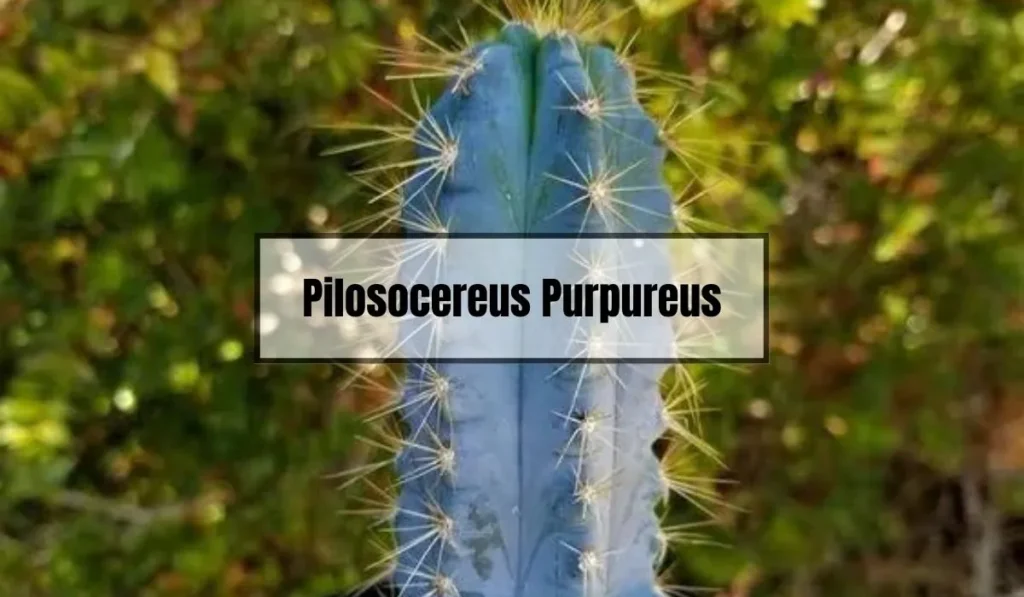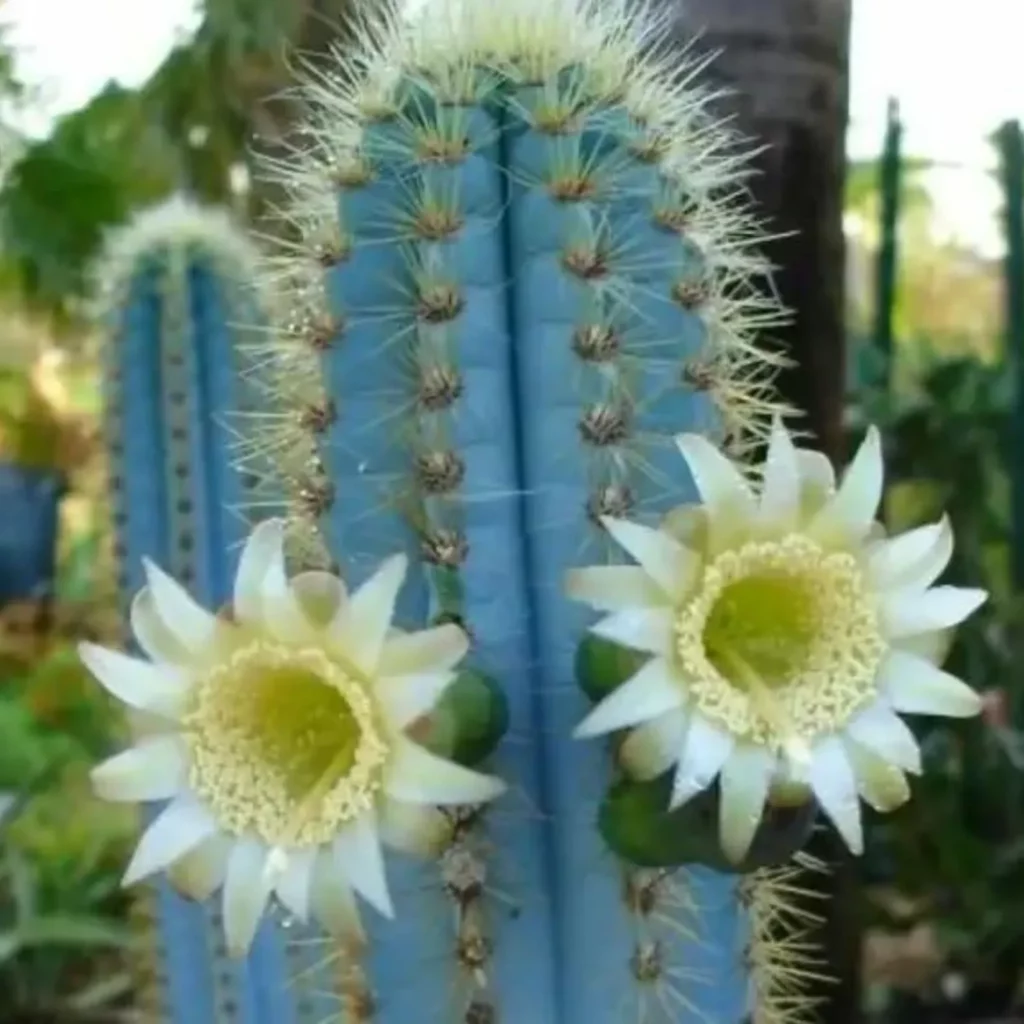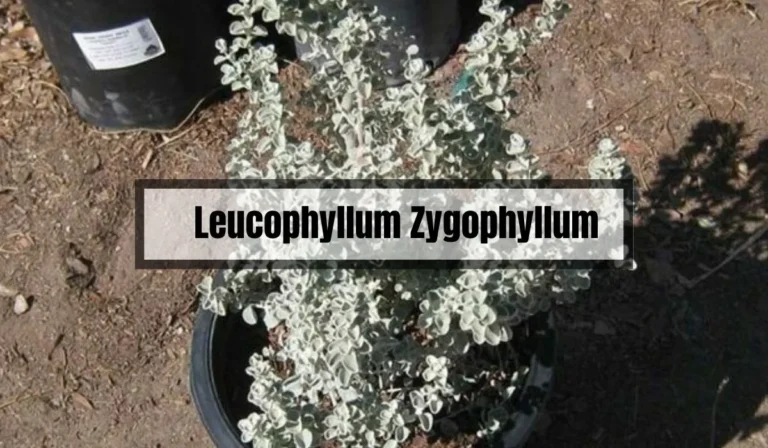Pilosocereus Purpureus: A Guide to Growing and Caring for the Cactus
Are you looking for a unique and beautiful cactus to add to your collection? Look no further than Pilosocereus purpureus! This stunning cactus is native to Mexico, the Caribbean, and Brazil and is known for its upright, relatively thin stems and beautiful purple coloration. In fact, it is sometimes referred to as the “purple torch cactus” due to its striking appearance.
If you’re interested in cultivating Pilosocereus purpureus, you’ll be pleased to know that it’s relatively easy to care for. This cactus prefers bright, indirect sunlight and well-draining soil.
You should water it sparingly, allowing the soil to dry out between waterings. During the winter months, it’s important to keep your Pilosocereus purpureus in a warm location, as it doesn’t tolerate cold temperatures well.
Key Takeaways
- Pilosocereus purpureus is a unique and beautiful cactus native to Mexico, the Caribbean, and Brazil.
- This cactus is relatively easy to care for, preferring bright, indirect sunlight and well-draining soil.
- Pilosocereus purpureus can be propagated through stem cuttings and is available for purchase from a variety of sources.

Pilosocereus Purpureus
Pilosocereus purpureus, also known as the purple torch cactus, is a tall and columnar cactus species that belongs to the family Cactaceae. This beautiful cactus species is native to the tropical regions of South America, including Brazil, Peru, and Ecuador.
In this section, we will discuss the origin and habitat, physical characteristics, growth, and reproduction of Pilosocereus purpureus.
Origin and Habitat
Pilosocereus purpureus is a tropical cactus species that thrives in warm and humid environments. It is native to the Amazon basin in South America, where it grows in rocky and sandy soils.
This cactus species can also be found in other parts of South America, including Brazil, Peru, and Ecuador.
Physical Characteristics
Pilosocereus purpureus is a tall and columnar cactus species that can grow up to 15 feet tall. The stem of this cactus is cylindrical and has a bluish-green color. The stem is covered with dense white spines that can grow up to 2 inches long. The spines are arranged in groups of 4 to 7 and can be found on the areoles along the stem.
The flowers of Pilosocereus purpureus are large and showy, with a diameter of up to 4 inches. The flowers are pink to purple in color and bloom in the summer months. The fruits of this cactus are edible and are about 2 inches long. The fruits are red to purple in color and contain small black seeds.
Growth and Reproduction
Pilosocereus purpureus is a slow-growing cactus species that requires full sun to partial shade and well-draining soil. This cactus species can be propagated from seeds or stem cuttings. When propagating from seeds, it is best to soak the seeds in water for 24 hours before planting them in well-draining soil.
Pilosocereus purpureus is a hardy cactus species that can tolerate drought and heat. However, it is susceptible to root rot if overwatered. To ensure healthy growth, it is important to water this cactus sparingly and allow the soil to dry out between waterings.
Cultivation and Care
So, you’ve decided to add a Pilosocereus purpureus to your collection. Great choice! This cactus is a stunning addition to any plant collection, with its beautiful purple body and golden spines. Here’s how to care for and cultivate your Pilosocereus purpureus:
Watering
Water your Pilosocereus purpureus once a week, making sure to give it a good soaking. During the summer, it will need more water, so keep an eye on it during hot weather.
However, be careful not to overwater it, as this can lead to rot. Always allow the soil to dry out between watering.
Temperature
Pilosocereus purpureus thrives in warm, tropical temperatures, ideally around and above 70 degrees. It can tolerate cooler temperatures, but it’s best to keep it in a warm environment, especially during the winter months.
Light
This cactus loves bright, indirect sunlight. It’s best to keep it near a window that receives plenty of light but is shaded from direct sunlight. If you notice that your Pilosocereus purpureus is turning yellow or brown, it may be getting too much sun.
Soil
Pilosocereus purpureus does well in well-draining soil, so make sure to use a cactus or succulent soil mix. You can also add perlite or sand to the soil to improve drainage.
Fertilizer
During the growing season, which is typically from spring to fall, you can fertilize your Pilosocereus purpureus once a month with a cactus or succulent fertilizer. However, be sure to dilute the fertilizer to half strength to avoid burning the roots.
Repotting
You should only repot your Pilosocereus purpureus when it has outgrown its current pot. When repotting, make sure to use a pot that is only slightly larger than the current one, as this cactus prefers to be slightly root-bound.
Propagation
Pilosocereus purpureus can be propagated from cuttings. To do this, simply cut a piece of the stem and allow it to dry out for a few days. Once the cut has calloused over, you can plant the cutting in well-draining soil and water sparingly until it begins to root.
Common Issues
Growing Pilosocereus purpureus can be a rewarding and enjoyable experience, but like all plants, it can also come with its fair share of challenges. Here are some common issues that you may encounter while caring for your Pilosocereus purpureus:
Overwatering
One of the most common mistakes that people make when caring for Pilosocereus purpureus is overwatering. This cactus is native to arid regions and is adapted to survive long periods of drought. Overwatering can cause the roots to rot, which can lead to the death of the plant.
To avoid overwatering, make sure that the soil is completely dry before watering your cactus. During the winter months, you should reduce the amount of water that you give your Pilosocereus purpureus.
Lack of Sunlight
Pilosocereus purpureus requires a lot of direct sunlight to thrive. Without enough sunlight, the cactus may become weak and susceptible to disease.
If you are growing your Pilosocereus purpureus indoors, make sure that it is placed near a south-facing window where it can receive at least six hours of direct sunlight each day. If you are growing your cactus outdoors, make sure that it is not shaded by other plants or structures.
Pests
Pests can also be a problem for Pilosocereus purpureus. Mealybugs, spider mites, and scale insects can all infest this cactus and cause damage.
To prevent pests from infesting your plant, make sure that you keep it clean and free from debris. You can also use insecticidal soap or neem oil to control pests.
Root Rot
Root rot is a common problem for Pilosocereus purpureus, especially if it is overwatered. If you notice that your cactus is starting to rot, you should remove it from the soil and cut away any damaged roots.
You should then replant the cactus in fresh, well-draining soil and reduce the amount of water that you give it.
Sunburn
While Pilosocereus purpureus requires a lot of direct sunlight, it can also be susceptible to sunburn. If you notice that your cactus is turning brown or black, it may be getting too much direct sunlight.
To prevent sunburn, you should gradually acclimate your cactus to direct sunlight by placing it in a shaded area for a few hours each day and gradually increasing the amount of direct sunlight that it receives.
By being aware of these common issues and taking steps to prevent them, you can help ensure that your Pilosocereus purpureus remains healthy and thriving.
How to Propagate Pilosocereus Purpureus?

So, you want to propagate your Pilosocereus Purpureus? Well, you’re in luck because it’s a relatively easy process. Here are a few methods you can use to propagate your Pilosocereus Purpureus:
Method 1: Propagation by Cuttings
One of the easiest ways to propagate Pilosocereus Purpureus is by cuttings. Here’s how you can do it:
- Using a clean, sharp knife, cut a stem from the parent plant. Make sure the stem is at least 6 inches long and has a few leaves or areoles.
- Allow the cutting to dry for a day or two. This will help prevent rotting when you plant it.
- Once the cutting has dried, plant it in well-draining soil. Make sure the soil is moist but not waterlogged.
- Place the cutting in a bright, but indirect, sunlight. Avoid exposure to direct sunlight as it can cause the cutting to dry out.
- Water the cutting regularly, keeping the soil moist but not waterlogged. You should start to see new growth within a few weeks.
Method 2: Propagation by Seeds
If you’re feeling a bit more adventurous, you can try propagating Pilosocereus Purpureus by seeds. Here’s how you can do it:
- Collect the seeds from a mature Pilosocereus Purpureus plant. You can do this by gently rubbing the fruit and collecting the seeds that fall out.
- Clean the seeds by removing any pulp or debris.
- Soak the seeds in warm water for 24 hours. This will help soften the seed coat and improve germination rates.
- Plant the seeds in well-draining soil. Make sure the soil is moist but not waterlogged.
- Place the seeds in a bright, but indirect, sunlight. Avoid exposure to direct sunlight as it can cause the seeds to dry out.
- Water the seeds regularly, keeping the soil moist but not waterlogged. You should start to see new growth within a few weeks.
Method 3: Propagation by Grafting
Grafting is another method you can use to propagate Pilosocereus Purpureus. Here’s how you can do it:
- Select a healthy, mature stem from the parent plant.
- Cut a small section from the top of the stem, leaving a flat surface.
- Select a healthy stem from another cactus that is of a similar size and shape to the cut section.
- Cut a small section from the top of the second stem, leaving a flat surface.
- Place the cut section of the second stem onto the cut section of the first stem. Make sure the two sections fit together snugly.
- Secure the two sections together with grafting tape or string.
- Allow the graft to heal for several weeks before removing the tape or string.
- Once the graft has healed, plant the cactus in well-draining soil. Make sure the soil is moist but not waterlogged.
There you have it! Three easy methods you can use to propagate your Pilosocereus Purpureus. Good luck!
Where to Buy Pilosocereus Purpureus?
This rare cactus, also known as the Crest Cactus or Blue Cactus, is known for its distinctive blue-green color and beautiful crest-like growth pattern. Here are a few options for where to buy Pilosocereus Purpureus:
Etsy
Etsy is a great place to find rare and unique plants, including Pilosocereus Purpureus. Many sellers on Etsy offer this cactus in a variety of sizes and at affordable prices.
Some sellers even offer payment plans, making it easier to add this stunning cactus to your collection. Keep in mind that shipping times and prices may vary depending on the seller’s location.
Local Nurseries
If you prefer to see the cactus in person before purchasing, check with your local nurseries. While Pilosocereus Purpureus is a rare cactus, some nurseries may carry it or be able to order it for you.
Local nurseries can also offer valuable advice on how to care for your new cactus and provide any necessary supplies.
Online Retailers
Online retailers such as Walmart also offer Pilosocereus Purpureus seeds for purchase. While it may take some time for the seeds to grow into mature cacti, this is a more affordable option for those who are patient and willing to wait.
Keep in mind that not all seeds may germinate, so it’s important to follow the instructions carefully and be prepared to wait several years for your cactus to reach maturity.
Is Pilosocereus Purpureus Poisonous?
You may be wondering if the Pilosocereus purpureus cactus is poisonous. The good news is that this cactus is not toxic to humans or pets. You can safely grow it in your home or garden without worrying about any harmful effects.
However, it is important to note that the cactus does have spines, which can cause injury if not handled properly. The spines are brown and golden in color and are found at the tops of the ribs. Be sure to wear gloves and use caution when handling the cactus to avoid getting pricked.
In addition to the spines, the Pilosocereus purpureus cactus also has bristles at the tops of the ribs and copious development of wooly, beard-like hairs in the flowering zone. These hairs can cause skin irritation if they come into contact with your skin, so it’s best to avoid touching them.
Frequently Asked Questions (FAQs)
What are the different species of Pilosocereus?
There are over 50 species of Pilosocereus, with Pilosocereus purpureus being one of the most popular. Other species include Pilosocereus pachycladus, Pilosocereus polygonus, and Pilosocereus chrysostele.
What is the average growth rate of a blue torch cactus?
The average growth rate of a blue torch cactus is slow, with the plant growing only a few inches per year. However, with proper care and attention, the plant can reach its full potential in around 10 years.
How big can a mature blue torch cactus get?
A mature blue torch cactus can grow up to 20 feet tall, with a diameter of up to 6 inches. However, it can take many years for the plant to reach this size.
Is the blue torch cactus considered a rare plant?
While the blue torch cactus is not considered a rare plant, it is still highly sought after by collectors and enthusiasts due to its unique appearance and slow growth rate.
Are there any poisonous parts of the blue torch cactus?
There are no known poisonous parts of the blue torch cactus. However, as with all cacti, it is important to handle the plant with care to avoid injury from its spines.
What are the distinguishing features of Pilosocereus purpureus compared to other species?
Pilosocereus purpureus is known for its unique purple coloration and golden-brown spines. It also has a distinctive columnar shape that tapers at the top, and can grow up to 10 feet tall. Compared to other Pilosocereus species, Pilosocereus purpureus is relatively easy to care for and is a great choice for beginners.
Conclusion
In conclusion, Pilosocereus purpureus is a fascinating cactus that is sure to impress any plant enthusiast. With its unique purple coloration and hairy spines, it stands out from other cacti in any collection. Here are a few key takeaways from this article:
- Pilosocereus purpureus is native to Brazil and is found in rocky areas and dry forests.
- It is a slow-growing cactus that can reach up to 10 feet tall in the wild.
- In cultivation, it is best grown in a warm, dry environment with plenty of sunlight.
- It is a hardy plant that can tolerate drought and neglect, but it should still be watered occasionally and fertilized during the growing season.
- Repotting should be done every few years, and care should be taken to avoid damaging the delicate roots.
If you are considering adding a Pilosocereus purpureus to your collection, be sure to do your research and provide it with the proper care.
With a little bit of attention, this cactus can thrive for years to come. And who knows, maybe one day you’ll even be able to propagate it and share it with your fellow plant enthusiasts. Happy growing!




